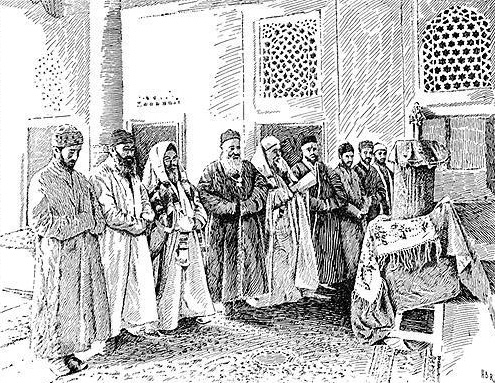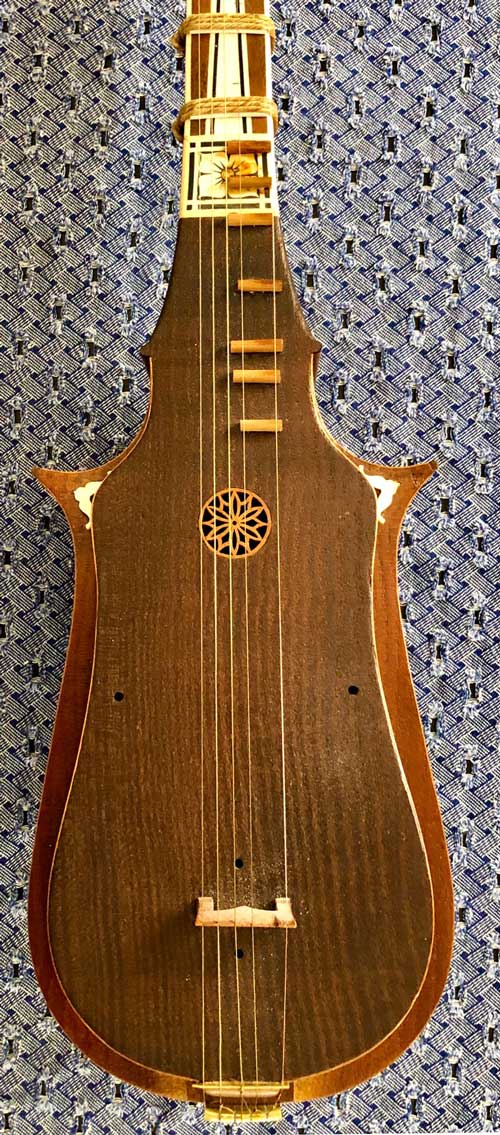|
Shashmaqam
Shashmaqam (russian: Шашмаком; uz, shashmaqom; tg, шашмақом; fa, ششمقام) is a Central Asian musical genre (typical of Tajikistan and Uzbekistan) which may have developed in the city of Bukhara. Shashmaqam means the six Maqams (modes) in the Persian language, dastgah being the name for Persian modes, and ''maqams'' being the name for modes more generally. It is a refined sort of music, with lyrics derived from Sufi poems about divine love. The instruments of shashmaqam provide an austere accompaniment to the voices. They consist, at most concerts, of a pair of long-necked lutes, the dayra, or frame drum, which, with its jingles, is very much like a tambourine, and the sato, or bowed tanbour, which vaguely resembles a bass fiddle. History In the first half of the 20th century in Uzbekistan, Abdul Rauf Fitrad, member of the Jadid, was particularly interested in shashmaqam, the traditional music of the Court. In 1927, he wrote a book called ''Ozbek ... [...More Info...] [...Related Items...] OR: [Wikipedia] [Google] [Baidu] |
Bukharian Jews
Bukharan Jews ( Bukharian: יהודיאני בוכארא/яҳудиёни Бухоро, ''Yahudiyoni Bukhoro''; he, יהודי בוכרה, ''Yehudey Bukhara''), in modern times also called Bukharian Jews ( Bukharian: יהודיאני בוכארי/яҳудиёни бухорӣ, ''Yahudiyoni Bukhorī''; he, יהודים בוכרים, ''Yehudim Bukharim''), are an ethnoreligious Jewish sub-group of Central Asia that historically spoke Bukharian, a Judeo-Tajik dialect of the Tajik language, in turn a variety of the Persian language. Their name comes from the former Central Asian Emirate of Bukhara (now primarily Uzbekistan), which once had a sizable Jewish population. Bukharan Jews comprise Persian-speaking Jewry along with the Jews of Iran, Afghanistan, and the Caucasus Mountains. Since the dissolution of the Soviet Union, the great majority have immigrated to Israel or to the United States while others have immigrated to Europe or Australia. Bukharan Jews are Mizrah ... [...More Info...] [...Related Items...] OR: [Wikipedia] [Google] [Baidu] |
Uzbekistan
Uzbekistan (, ; uz, Ozbekiston, italic=yes / , ; russian: Узбекистан), officially the Republic of Uzbekistan ( uz, Ozbekiston Respublikasi, italic=yes / ; russian: Республика Узбекистан), is a doubly landlocked country located in Central Asia. It is surrounded by five landlocked countries: Kazakhstan to the north; Kyrgyzstan to the northeast; Tajikistan to the southeast; Afghanistan to the south; and Turkmenistan to the southwest. Its capital and largest city is Tashkent. Uzbekistan is part of the Turkic world, as well as a member of the Organization of Turkic States. The Uzbek language is the majority-spoken language in Uzbekistan, while Russian is widely spoken and understood throughout the country. Tajik is also spoken as a minority language, predominantly in Samarkand and Bukhara. Islam is the predominant religion in Uzbekistan, most Uzbeks being Sunni Muslims. The first recorded settlers in what is now Uzbekistan were Easter ... [...More Info...] [...Related Items...] OR: [Wikipedia] [Google] [Baidu] |
Uzbek People
The Uzbeks ( uz, , , , ) are a Turkic ethnic group native to the wider Central Asian region, being among the largest Turkic ethnic group in the area. They comprise the majority population of Uzbekistan, next to Kazakh and Karakalpak minorities, and are also found as a minority group in: Afghanistan, Pakistan Tajikistan, Kyrgyzstan, Kazakhstan, Turkmenistan, Russia, and China. Uzbek diaspora communities also exist in Turkey, Saudi Arabia, United States, Ukraine, and other countries. Etymology The origin of the word ''Uzbek'' still remains disputed. One view holds that it is eponymously named after Oghuz Khagan, also known as ''Oghuz Beg'', became the word ''Uzbek''.A. H. Keane, A. Hingston Quiggin, A. C. Haddon, Man: Past and Present, p.312, Cambridge University Press, 2011, Google Books, quoted: "Who take their name from a mythical Uz-beg, Prince Uz (beg in Turki=a chief, or hereditary ruler)." Another theory states that the name means ''independent'', ''genuine man'', o ... [...More Info...] [...Related Items...] OR: [Wikipedia] [Google] [Baidu] |
Uzbekistani Music
The music of Uzbekistan has reflected the diverse influences that have shaped the country. It is very similar to the music of the Middle East and is characterized by complicated rhythms and meters. Because of the long history of music in the country and the large variety of music styles and musical instruments, Uzbekistan is often regarded as one of the most musically diverse countries in Central Asia. Classical music of Uzbekistan The music of what is now Uzbekistan has a very long and rich history. Shashmaqam, a Central Asian classical music style, is believed to have arisen in the cities of Bukhara and Samarqand in the late 16th century. The term "shashmaqam" translates as ''six maqams'' and refers to the structure of music with six sections in different musical modes, similar to classical Persian traditional music. Interludes of spoken Sufi poetry interrupt the music, typically beginning at a low register and gradually ascending to a climax before calming back down to the b ... [...More Info...] [...Related Items...] OR: [Wikipedia] [Google] [Baidu] |
Music Of Uzbekistan
The music of Uzbekistan has reflected the diverse influences that have shaped the country. It is very similar to the music of the Middle East and is characterized by complicated rhythms and meters. Because of the long history of music in the country and the large variety of music styles and musical instruments, Uzbekistan is often regarded as one of the most musically diverse countries in Central Asia. Classical music of Uzbekistan The music of what is now Uzbekistan has a very long and rich history. Shashmaqam, a Central Asian classical music style, is believed to have arisen in the cities of Bukhara and Samarqand in the late 16th century. The term "shashmaqam" translates as ''six maqams'' and refers to the structure of music with six sections in different musical modes, similar to classical Persian traditional music. Interludes of spoken Sufi poetry interrupt the music, typically beginning at a low register and gradually ascending to a climax before calming back down to the ... [...More Info...] [...Related Items...] OR: [Wikipedia] [Google] [Baidu] |
Dushanbe
Dushanbe ( tg, Душанбе, ; ; russian: Душанбе) is the capital and largest city of Tajikistan. , Dushanbe had a population of 863,400 and that population was largely Tajik. Until 1929, the city was known in Russian as Dyushambe (russian: Дюшамбе, ''Dyushambe''), and from 1929 to 1961 as Stalinabad ( tg, Сталинобод, Stalinobod), after Joseph Stalin. Dushanbe is located in the Gissar Valley, bounded by the Gissar Range in the north and east and the Babatag, Aktau, Rangontau and Karatau mountains in the south, and has an elevation of 750–930 m. The city is divided into four districts, all named after historical figures: Ismail Samani, Avicenna, Ferdowsi, and Shah Mansur. In ancient times, what is now or is close to modern Dushanbe was settled by various empires and peoples, including Mousterian tool-users, various neolithic cultures, the Achaemenid Empire, Greco-Bactria, the Kushan Empire, and the Hephthalites. In the Middle Ages, more s ... [...More Info...] [...Related Items...] OR: [Wikipedia] [Google] [Baidu] |
Sato (instrument)
The Sato ( Uzbek: Сато) is a bowed tanbur, or long-necked lute, played by performers of Central Asian classical and folk music, mainly in Uzbekistan. It has five strings. When plucked, the top string is pressed to the neck to produce a melody; the other four strings are drone strings. Frets on the neck are made of tied string. The soundboard has holes drilled in it for sound holes. It is made from mulberry wood. Famous Uzbek musician Turgun Alimatov Turgun Alimatov ( uz, Turgʻun Alimatov; 20 January 1922 – 17 December 2008) was a leading Uzbek classic music and shashmaqam player and composer of 20th century folk and classic music. He was a master performer of tanbur, dutar The ''dutar' ... is solely responsible for reviving the art of playing the Sato, as it had completely disappeared for a number of centuries before he took it up in 1957. Thus he has been considered as the founder of the Sato and its playing style and technique.https://shahnameh.netlify.com/sato.htm ... [...More Info...] [...Related Items...] OR: [Wikipedia] [Google] [Baidu] |
Tajikistani Music
The Demographics of Tajikistan is about the demography of the population of Tajikistan, including population growth, population density, ethnicity, education level, health, economic status, religious affiliations, and other aspects of the population. Demographic trends Tajikistan's main ethnic group are the Tajiks, with minorities such as the Uzbeks and Kyrgyz, and a small Russian minority. Because not everyone in Tajikistan is an ethnic Tajik, the non-Tajik citizens of the country are referred to as Tajikistani. The official nationality of any person from Tajikistan is a Tajikistani, while the ethnic Tajik majority simply call themselves Tajik. Contemporary Tajiks are an Iranian people. In particular, they are descended from ancient Eastern Iranian peoples of Central Asia, such as the Soghdians and the Bactrians, with an admixture of Western Iranian Persians as well as non-Iranian peoples. Until the 20th century, people in the region used two types of distinction to ident ... [...More Info...] [...Related Items...] OR: [Wikipedia] [Google] [Baidu] |
Music Of Tajikistan
Tajik music is closely related to other Central Asian forms of music. The classical music is shashmaqam, which is also distinctive in Uzbekistan. Southern Tajikistan has a distinctive form of folk music called falak, which is played at celebrations for weddings, circumcisions and other occasions. Tajik folk music Tajik folk music is traditionally divided into three styles, Pamir ( Mountain-Badakhshan province), Central Kuhistoni (Hisor, Kulob, Gharm provinces) and Sogdiana's northern style; the latter is part of the same musical culture as the adjacent regions of Uzbekistan ( Kashkadarya Province and Surkhandarya Province). There are many kinds of songs, both lyrical and instrument, including work songs, ceremonial, funeral, wedding and musical epics, especially the central Tajik heroic legend '' Gurugli'' also known as "Omar Sham Sham". Gharibi ''Gharibi'' is ''the song of a stranger'', an early 20th-century innovation of poor farm laborers and other workers who had ... [...More Info...] [...Related Items...] OR: [Wikipedia] [Google] [Baidu] |
Klezmer
Klezmer ( yi, קלעזמער or ) is an instrumental musical tradition of the Ashkenazi Jews of Central and Eastern Europe. The essential elements of the tradition include dance tunes, ritual melodies, and virtuosic improvisations played for listening; these would have been played at weddings and other social functions. The musical genre incorporated elements of many other musical genres including Ottoman (especially Greek and Romanian) music, Baroque music, German and Slavic folk dances, and religious Jewish music. As the music arrived in the United States, it lost some of its traditional ritual elements and adopted elements of American big band and popular music. Among the European-born klezmers who popularized the genre in the United States in the 1910s and 1920s were Dave Tarras and Naftule Brandwein; they were followed by American-born musicians such as Max Epstein, Sid Beckerman and Ray Musiker. After the destruction of Jewish life in Eastern Europe during the Holoca ... [...More Info...] [...Related Items...] OR: [Wikipedia] [Google] [Baidu] |
Tajik Language
Tajik (Tajik: , , ), also called Tajiki Persian (Tajik: , , ) or Tajiki, is the variety of Persian spoken in Tajikistan and Uzbekistan by Tajiks. It is closely related to neighbouring Dari with which it forms a continuum of mutually intelligible varieties of the Persian language. Several scholars consider Tajik as a dialectal variety of Persian rather than a language on its own. The popularity of this conception of Tajik as a variety of Persian was such that, during the period in which Tajik intellectuals were trying to establish Tajik as a language separate from Persian, prominent intellectual Sadriddin Ayni counterargued that Tajik was not a "bastardised dialect" of Persian.Shinji ldoTajik Published by UN COM GmbH 2005 (LINCOM EUROPA) The issue of whether Tajik and Persian are to be considered two dialects of a single language or two discrete languages has political sides to it. By way of Early New Persian, Tajik, like Iranian Persian and Dari Persian, is a continuation o ... [...More Info...] [...Related Items...] OR: [Wikipedia] [Google] [Baidu] |

.jpg)

.jpg)


.jpg)
